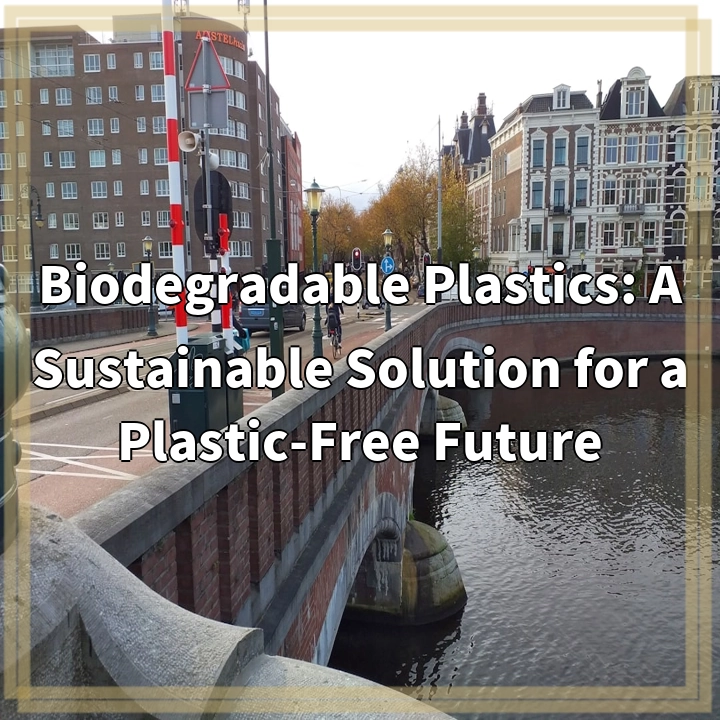
What is Biodegradable Plastics?
Biodegradable plastics are a type of plastic material that can break down naturally into the environment over a period of time. These plastics are designed to degrade through the activity of microorganisms, such as bacteria or fungi, which consume the plastic and convert it into harmless substances, such as water, carbon dioxide, and biomass. Unlike traditional plastics that can persist in the environment for hundreds of years, biodegradable plastics offer the promise of a more sustainable alternative.
Real-World Problems with Biodegradable Plastics
1. Lack of Standardization
One of the challenges with biodegradable plastics is the lack of standardized guidelines and regulations. The term “biodegradable” is often used loosely, leading to confusion and greenwashing. Without clear standards for biodegradability and compostability, it can be difficult for consumers and businesses to make informed choices.
2. Limited Industrial Infrastructure
While biodegradable plastics show promise, the current waste management infrastructure is not equipped to handle them efficiently. Biodegradable plastics often require specific conditions, such as high temperatures and moisture, to degrade properly. Without appropriate composting facilities or industrial processes in place, these plastics may end up in landfills or contribute to pollution.
3. Mismanaged Waste Streams
In many regions, waste management systems are already struggling to handle the existing waste streams. The introduction of biodegradable plastics adds complexity to an already overwhelmed system. If not properly segregated and managed, biodegradable plastics can contaminate recycling streams or hinder the recycling process, impacting overall waste reduction efforts.
4. Environmental Impacts
While biodegradable plastics aim to reduce environmental harm, their production can still have negative impacts. The manufacturing process of biodegradable plastics often relies on fossil fuels, contributing to greenhouse gas emissions. Additionally, the resources required to produce these plastics, such as water and energy, should be taken into account when evaluating their overall environmental footprint.
5. Consumer Awareness and Education
Another challenge lies in consumer awareness and education. Many people are still unaware of the differences between biodegradable plastics, compostable plastics, and traditional plastics. Without proper understanding, consumers may unknowingly dispose of biodegradable plastics in regular waste streams, leading to unintended consequences.
Conclusion
Biodegradable plastics hold promise as a potential solution for a plastic-free future. However, addressing the real-world problems associated with them is crucial. The standardization of terms, the development of appropriate waste management infrastructure, and increased consumer awareness and education are essential steps towards realizing the full potential of biodegradable plastics and creating a truly sustainable and plastic-free future.

Solutions for Biodegradable Plastics
While biodegradable plastics present challenges, there are steps that can be taken to address the issues and promote their sustainable use.
1. Standardization and Regulation
Establishing clear and standardized guidelines for biodegradability and compostability is crucial. This can help prevent greenwashing and ensure that only truly biodegradable plastics are labeled as such. Governments and regulatory bodies play a vital role in setting these standards and enforcing them.
2. Investment in Infrastructure
Investing in the development of proper waste management infrastructure is essential. This includes facilitating the establishment of composting facilities and improving recycling systems to handle biodegradable plastics effectively. Collaborations between governments, industries, and waste management organizations can help accelerate the progress.
3. Enhanced Waste Segregation and Collection
Encouraging proper waste segregation and collection is critical. Providing clear instructions to consumers on how to dispose of biodegradable plastics appropriately can prevent contamination of recycling streams. Public awareness campaigns and education initiatives can help raise awareness and promote responsible waste management practices.
4. Sustainable Manufacturing Practices
Promoting sustainable manufacturing practices for biodegradable plastics is key. This includes reducing reliance on fossil fuels and incorporating renewable energy sources into the production process. Additionally, minimizing water consumption and adopting eco-friendly production techniques can further reduce the environmental impact.
5. Collaboration and Innovation
Collaboration among stakeholders is essential for finding innovative solutions. This involves working together to address the challenges associated with biodegradable plastics. Researchers, industry experts, policymakers, and consumers should join forces to explore new technologies, materials, and approaches that enhance the sustainability and performance of biodegradable plastics.
Conclusion
By implementing these solutions, we can overcome the obstacles surrounding biodegradable plastics. Standardization, infrastructure investments, waste segregation, sustainable manufacturing, and collaboration are all critical components of a comprehensive approach towards realizing the full potential of biodegradable plastics and achieving a sustainable, plastic-free future.















